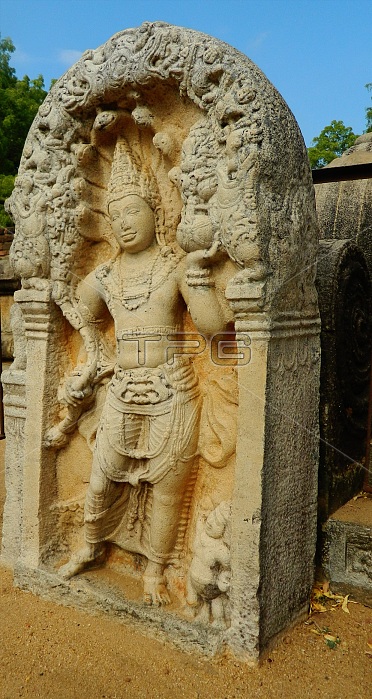
Sandakada pahana, also known as Moonstone, is a unique feature of the Sinhalese architecture of ancient Sri Lanka. It is a carved semi-circular stone slab, usually placed at the bottom of staircases and entrances. First seen in the latter stage of the Anuradhapura period, the sandakada pahana evolved through the Polonnaruwa, Gampola and Kandy periods. According to historians, the sandakada pahana symbolises the cycle of Sans?ra in Buddhism.The ancient chronicle Mahavamsa and Pali literature such as the Samantapasadika refer to the sandakada pahana as patika. Sri Lanka. The first sandakada pahanas were created during the latter stage of the ancient Anuradhapura Kingdom. They were only placed at entrances to Buddhist temples during this period. A half lotus was carved in the center, which was enclosed by several concentric bands. The first band from the half lotus is decorated with a procession of swans, followed by a band with an intricate foliage design known as liyavel which symbolizes the never ending life due to desires. The third band has carvings of four animals; elephants, lions, horses, and bulls. These four animals follow each other in a procession symbolizing the four stages in life: growth, energy, power and forbearance. The fourth and outermost band contains a carving of flames while the lotus symbolizing Nibbana, the freedom of life. The moonstone of Biso maligaya is the best known of the era.
| px | px | dpi | = | cm | x | cm | = | MB |
Details
Creative#:
TOP28896734
Source:
達志影像
Authorization Type:
RM
Release Information:
須由TPG 完整授權
Model Release:
no
Property Release:
no
Right to Privacy:
No
Same folder images:

 Loading
Loading